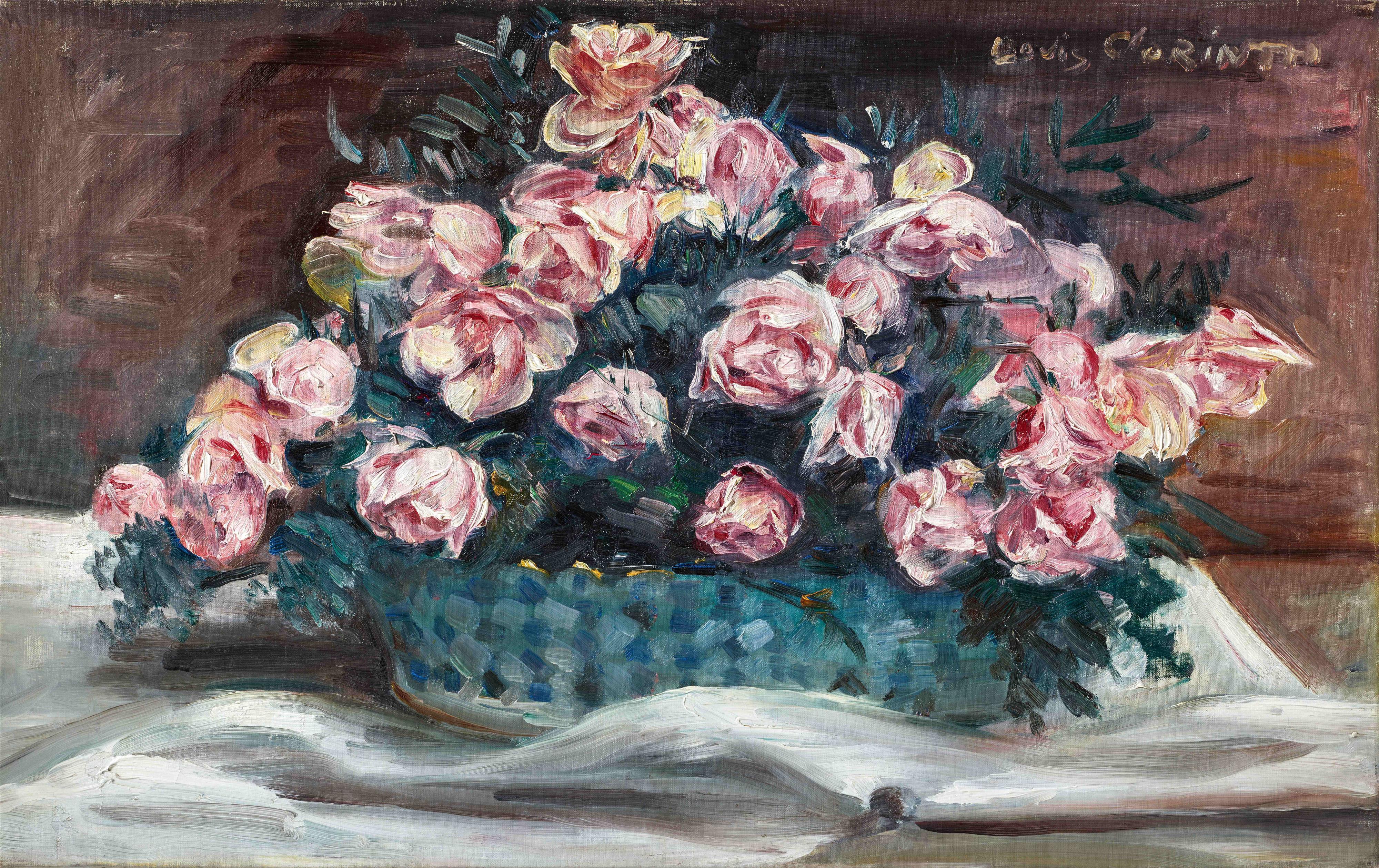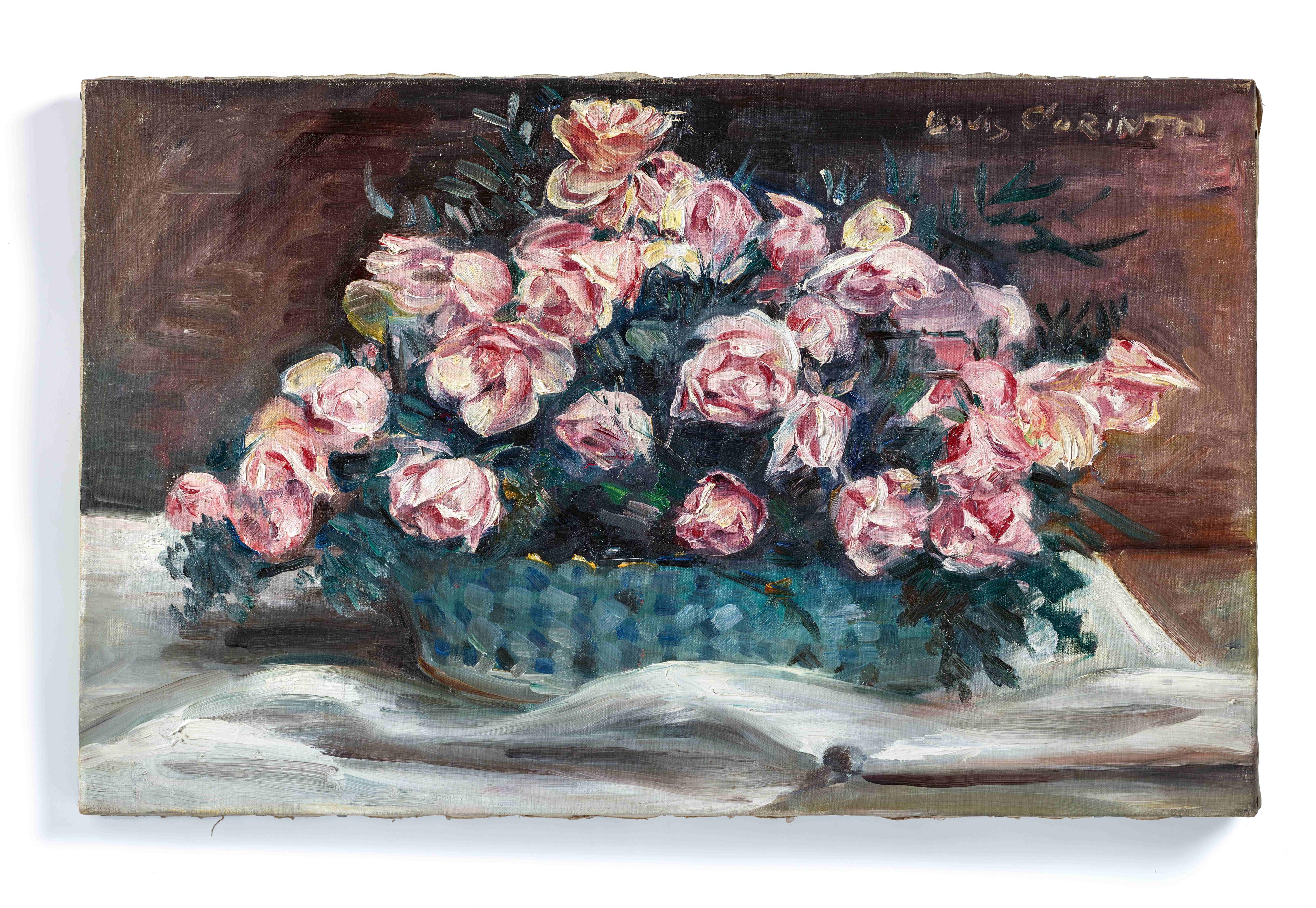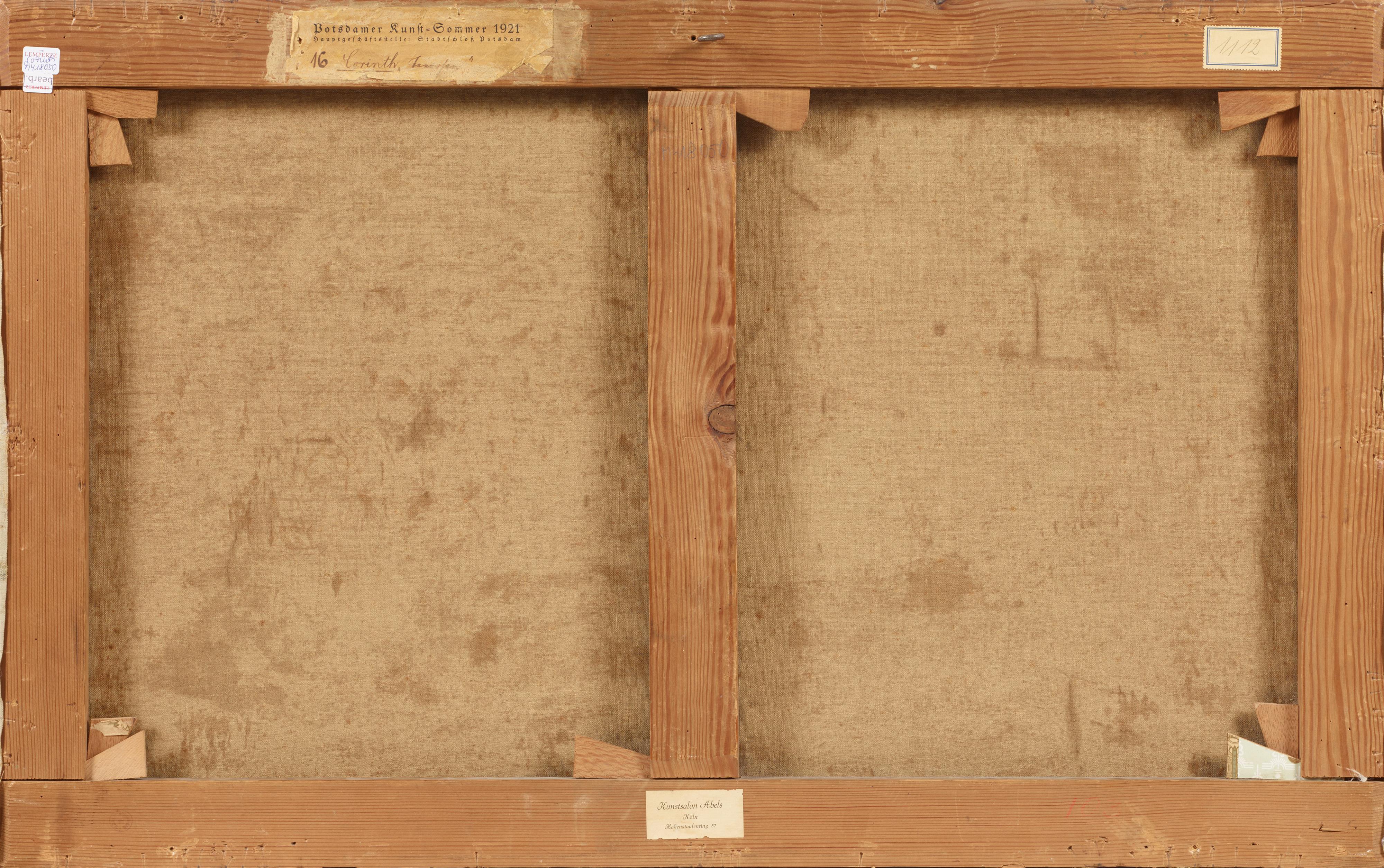Lovis Corinth
Meißener Schale mit Teerosen
1911
Oil on canvas. 53.4 x 85.3 cm. Framed. Signed 'Lovis Corinth' in light pink upper right. - In very good condition.
Floral still lifes were a favoured subject in the work of Lovis Corinth. In 1911 he also began creating an increasing number of wide arrangements of flowers on horizontal canvases, such as the one offered here (see e.g. Cat. Rais. Berend-Corinth 480, 481, 503). In contrast to these works it is striking that, here, Corinth has devoted his attention to a single type of flower, namely, the tea rose. In its variety and abundance it spreads through the container in grandiose opulence, as though it had been poured out into it. This oval bowl provides the scarcely restrainable bouquet of roses with its form and is even mentioned in the title. It is the “Meissen Basket”, a type of perforated porcelain bowl developed in the mid 18th century and seen here decorated in blue and gold. This bowl was standing on the table of Corinth’s hostess – a cousin of the gallerist Cassirer – when, according to his wife, the painter noticed it with delight. He then received this arrangement delivered to his studio the next day, where he immediately painted it (see ibid., p. 131).
Conventional in structure, this floral still life presented on a draped cloth – which appears nearly unconnected with the represented object, in the finest manner of Édouard Manet – demands our special attention. Like some of the blooming flowers of the roses, its form dissolves and already reveals Corinth’s unbridled will to achieve pure painting.
Cathrin Klingsöhr-Leroy also sees, in the “late floral paintings, examples of a virtuosity that neglects the depiction of the object in order to invest it with reality. Corinth’s brushstroke, whose rapidity we can scarcely follow with our eyes, does not outline the form, it denotes the substance. […] Corinth’s flowers are a pretext for pure painting, for almost abstract compositions of colours […]. They form a structure, a system of signs, that simultaneously denaturalises and intensifies. The flowers lose their form, the containers their volume and the space its depth, but they all gain in the vitality and energy emanating from the painter’s gesture” (in: exh. cat. Lovis Corinth. Blumenbilder. Cologne/Paris/St. Moritz 2022. Galerie Karsten Greve, p. 32).
Catalogue Raisonné
Berend-Corinth 507
Provenance
Dr. Mauthner, Berlin; Dr. A. Orgler, Berlin; Private property; Galerie Kunstsalon Abels, Cologne (label verso on stretcher); Georg Schäfer, Schweinfurt; Private property; Kunsthandlung Resch, Gauting; Private property; Galerie Dr. Bühler, Munich (1974); since then Private collection, North Rhine-Westphalia
Exhibitions
Berlin 1913, Berliner Sezession, no. 211; Berlin 1915 (Fritz Gurlitt), no. 33; Berlin 1918, Berliner Sezession, no. 71; Potsdam 1921 (Stadtschloß), Potsdamer Kunst-Sommer, no. 16 (label verso on stretcher); Berlin 1923 (Nationalgalerie), no. 25; Berlin 1926 (Nationalgalerie), no. 207; Kassel 1926 (Kunstverein), no. 38






